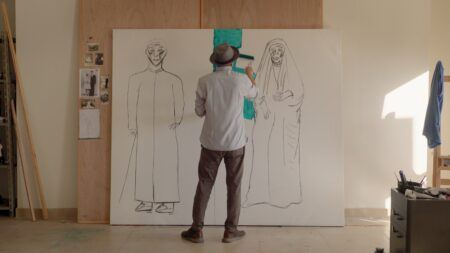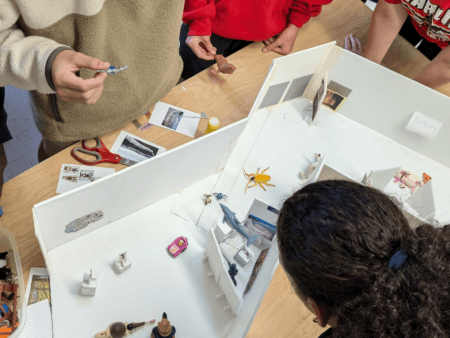Teaching with Contemporary Art
Keep it Real, Keep it Relevant
Student engagement should be considered before a student even walks through the door of a classroom. If as educators we have not thought about our students before our personal interests, the content we hope to convey will never resonate with them beyond the classroom walls. Before the planning stages—gathering information; researching individuals, topics, and ideas; creating connections and synthesizing concepts into conversational themes or projects that our students can take part in—one must ask: “Who are my students?” “What are their needs?” and “How am I helping them meet those needs?”
What will pique students’ interests and tap into their creativity? How do we drive them as learners but challenge them as thinkers? By developing lesson content with our students in mind, we can make it relevant to their lives. Contemporary art offers an important dimension to my teaching within a trauma-informed classroom: these artists push our ideas of what art can look like and who can make art. Through the study of contemporary art, students can be engaged by ideas that speak directly to their lives.
Empathy also plays a vital role in my teaching. A person’s emotional life is much like an iceberg; one’s true emotional state may be concealed deep below the surface and hidden from first glance. At the forefront of my teaching process is planning for my students’ needs and sensitivities. Students who have been deeply affected by trauma are focused on their immediate needs, concerns, safety, and senses of self. When creating assignments, I first build a safe space for them, where they can reveal themselves in healthy and sincere ways. I always consider their needs and how our time in class can address those needs. With empathy towards my students’ situations, I try to find ways for art to be relevant to their lives, to create connections that make art more meaningful for them.
As I plan lessons, I ask myself such questions as:
- “What relationships do my students have to art?”
- “In what ways can the artists I incorporate in the classroom relate to and empower my students?”
- “What experiences can I create that will allow students to think about broader ideas, beyond their immediate world?”
- “How do the artists I select—and their ideals and disciplines—reflect my classroom and myself as a teacher, mentor, and person of trust?”
For some of my students, learning about contemporary art has helped to demystify art, due to its inclusive and free spirit: it can be about anything and made by anyone. I strive to instill this idea in all my students, and I feel that introducing living artists and their work in the classroom is a powerful strategy that enhances a student’s investment in the learning experience. I deeply consider the artists I discuss in the class, especially regarding how they can help create a positive impact for my students and relate to their sensibilities. These artists tend to be:
- Artists who explore issues of social justice,
- Artists who focus on honesty and expressing emotions,
- Artists who work with identity, whose work is related to a sense of self,
- Artists who consider cultural memory and the migration of both people and ideas,
- Artists who show empathy as a trait and who consider the lives, feelings, engagement, and impact of others while creating their own work.

Student collage of the local Philadelphia neighborhood, inspired by Mark Bradford. Courtesy of the author.
In my classroom this past year, we created projects inspired by the work of Carrie Mae Weems, Nick Cave, and Mark Bradford. Along with their strong ties to social justice, all three of these artists consider their personal narratives, emotions, experiences, and histories within their work. My students appreciated this openness and honesty and identified them as traits of a trustworthy person. We also explored the work of Tania Bruguera, Allora and Calzadilla, Theaster Gates, Pedro Reyes, and Thomas Hirschhorn for the ways in which these artists incorporate communities and consider the impact of their work on the lives of others. Even if at first the students were challenged by the appearance and meaning of the art, they responded to these artists because of the authenticity they embodied and the empathy they expressed for the communities they worked in.





